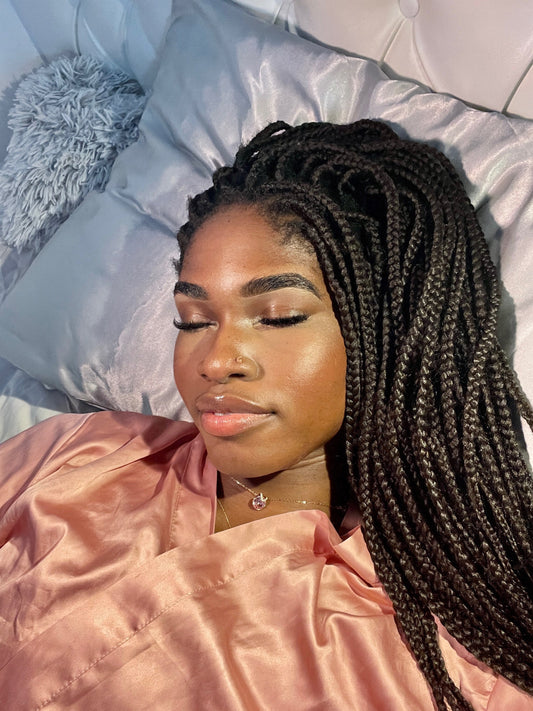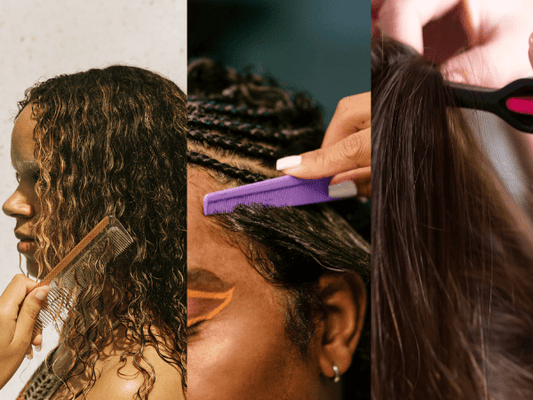Understanding Moisture Overload
Moisture overload happens when the hair's protein-moisture balance is disrupted by excessive hydration. This imbalance often results from overusing moisturizing products, frequent deep conditioning without incorporating protein treatments, or using products that are too heavy for your hair type. While moisture is essential for curly hair to prevent dryness and breakage, maintaining a balance with protein ensures curls are both hydrated and resilient.
Symptoms of Moisture Overload
Identifying moisture overload involves observing changes in your hair's texture, appearance, and behavior. Common symptoms include:
- Overly Soft and Mushy Texture: While softness is generally desired, hair that feels mushy or overly soft to the touch may be experiencing moisture overload.
- Lack of Elasticity: Hair with moisture overload has reduced elasticity, making it difficult to bounce back or hold a curl.
- Increased Breakage and Shedding: Excessive moisture can weaken hair strands, leading to breakage and shedding even with gentle handling.
- Limp, Lifeless Curls: Curls may appear limp, flat, and unable to maintain their shape or definition.
- Frizz: Ironically, moisture overload can also lead to frizz as the hair cuticle swells with too much moisture.
Addressing Moisture Overload
Correcting moisture overload involves restoring the protein-moisture balance to your hair. Here are steps to reclaim the health and vitality of your curls:
1. Reduce Moisturizing Treatments
Temporarily cut back on deep conditioning treatments and limit the use of leave-in conditioners, especially those with heavy formulations. Allow your hair some time to adjust and regain its strength.
2. Incorporate Protein Treatments
Introduce light protein treatments to help rebuild your hair's structure. Products containing hydrolyzed proteins or amino acids are effective for penetrating the hair shaft and reinforcing its integrity. Start with a mild protein treatment to see how your hair responds before moving to stronger treatments if necessary.
3. Clarify Your Hair
Use a clarifying shampoo to remove any buildup from heavy moisturizing products. This can help reset your hair and prepare it for a more balanced care routine. Follow up with a protein treatment to start restoring balance.
4. Balance Your Routine
Going forward, aim for a balanced hair care routine that includes both moisturizing and protein-containing products. Pay attention to how your hair responds after each treatment and adjust the frequency accordingly.
5. Choose Lighter Products
Opt for lightweight moisturizers and stylers that won't weigh down your curls or contribute to moisture overload. Gels and mousses can be good options for maintaining curl definition without excessive hydration.
Preventing Moisture Overload
Prevention is key to avoiding the cycle of moisture overload. Incorporate these practices into your hair care routine:
- Listen to Your Hair: Regularly assess your hair's condition and adjust your routine as needed. If your curls begin to feel too soft or limp, it may be time to introduce a protein treatment.
- Understand Product Ingredients: Learn to read product labels and recognize ingredients that contribute to moisture or protein. This knowledge can help you make informed decisions about what to use in your routine.
- Customize Your Care: Recognize that hair needs can change with the seasons, health, and lifestyle factors. Be flexible and willing to tailor your routine to meet your hair's current needs.
Conclusion
Moisture overload can be a frustrating challenge for those with curly hair, leading to limp, lifeless curls that lack definition and strength. By recognizing the symptoms and taking steps to restore the protein-moisture balance, you can recover the health and beauty of your curls. Remember, the key to thriving curly hair lies in finding the right balance for your specific needs, which may require experimentation and adjustments over time. With patience and attentive care, you can maintain vibrant, resilient curls that are both hydrated and strong.











